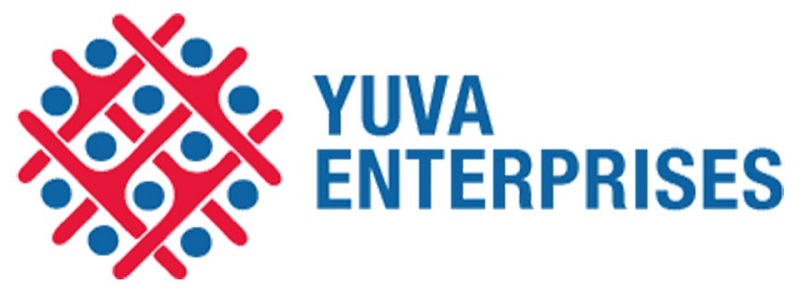Stages of Group Formation Characteristics and Five Stages of Group Development
Content
If this team was comprised of too many plants in its storming stages, these people could be completing for their idea to be heard. A plants ideas and energy may decrease quickly if there are too many monitor evaluators as these people will motivate the plants by constantly pointing out the flaws in their ideas. An example of the norming stage would be a period, usually around six months into the research project, where the team members understand each other’s preferences. The preferences include preferred working methods and personal boundaries and showing respect for them. People with important abilities such as calm-headedness in the middle of a storm are recognized and appreciated.
Members often have high positive expectations for the team experience. At the same time, they may also feel some anxiety, wondering how they will fit in to the team and if their performance will measure up. Team effectiveness is enhanced by a team’s commitment to reflection and on-going evaluation.
The Stages of Group Formation, and how they Aid Your Teams Success
To guide your team as it develops, it helps to understand the stages of group development. Have you ever wondered why it takes some time for a new team to hit peak performance? In this article, we discuss the different stages of team development and how leaders can guide their team through those stages to increase collaboration.
The termination of the group is a regressive movement from giving up control to giving up inclusion in the group. True interdependence is the norm of this stage of group development. The team is flexible as individuals adapt to meet the needs of other team members.
One of the common ways is to give candies of different colors to the participants. Then, depending on the color of the candy they receive, ask them to share a story on the topic as given below. When you have a totally new team or some members are new to an existing group, things won’t be easy. Clockify is a time tracker and timesheet app that lets you track work hours across projects. Recognize and celebrate the team’s achievements, to make sure your work as a team ends on a positive note.
Personal tools
Based on the roles as well as the positions held by the members, the group has to have a structure. Teambuilding.com is a leading authority on team building and engagement at work. For more advice, check out these lists of team building books and team building tips.

The group may even develop a sense of synergy, which means that the members feel they can accomplish more together than they could on their own. In the fifth stage, called adjourning, there is no growth, but it is a recognition of the completion of the task that the group was formed for. Group members are not only comfortable with one another, but they’re also comfortable with their work and expectations.
John Fairhurst TPR model
The leader of the team will then describe the tasks to the group, describe the different behaviours to the group and how to deal and handle complaints. In Tuckman’s 1965 paper, only 50% of the studies identified a stage of intragroup conflict, and some of the remaining studies jumped directly from stage 1 to stage 3. Some groups may avoid the phase altogether, but for those who do not, the duration, intensity and destructiveness of the “storms” can be varied.
As a natural consequence of it all, your project is bound to progress at a steady rate — mismatched, uncompromising teams can only produce incomplete, confusing projects. Now, if the team members have grown close over time, and grown accustomed to working with each other, they may mourn the fact that it’s now time to move on and work with other people. The Performing stage is what your https://globalcloudteam.com/ team is really after — in this stage, you and your team get to enjoy synergy. However, this stage is crucial if you want your team to succeed — you won’t get far with your project by sweeping vital questions and potential problems under a rug. Well, truth be told, some teams may skip this step altogether, all in the hope that they’ll avoid unpleasant conflict and the clash of ideas.
Stages of Group Development
Instead, they adopt an open exchange of ideas and opinions and learn about what it’s really like to work together. This can lead to conflict, disputes, and competition, depending on how their expectations, workflows, ideas, and opinions differ. Their breakup is called adjournment, which requires dissolving intense social relations and returning to perfnanent assignments. For permanent work groups, performing is the last stage in their development.
- They start tolerating the whims and fancies of the other team members.
- An example of an ice breaker is a game called Two Truths And A Lie.
- And at the same time, team members may feel a sense of deep satisfaction at the accomplishments of the team.
- She has over 20 years of teaching experience at the college level in subjects including business and political science.
- Examples of functional groups would be a marketing department, a customer service department, or an accounting department.
Teammates meet, discover group member strengths and weaknesses, explore the basics of the project, and form group goals. Group members designate roles and delegate responsibilities with help from team leaders. In this third stage of group development, the team begins to coalesce as individual differences are ironed out, and team members can accept each other’s qualities and appreciate their teammates’ strengths. In this stage, team members begin to show comfort in asking for help and providing constructive feedback to and from the rest of the group members. During the norming stage, the team is more confident after the trials of the storming stage, and motivation levels increase. Understanding the team building stages helps a leader guide groups through the team development process.
Study the norming stage of the group development model in more detail and see norming stage examples. Group size will affect not only participation but satisfaction as well. Besides this, the group members are interdependent in some manner, i. Over the years, the importance of social group works as an effective method of social work and its intervention has been increasingly realized. Informal groups can take the form of interest groups, friendship groups, or reference groups.
In this stage, team members are in the process of learning how to work together. As team members begin collaborating, conflicts may arise, whether that’s from clashing personalities or opinions on how a project should progress. Without a clear understanding four stages of team development of what role each individual plays on the team, relationships can get tumultuous as team members struggle to find a role that’s right for them. Group member roles and responsibilities are clearly established during the norming stage.
Team Building Stages: 5 Steps
This is the stage where the dominating group members emerge, while the less confrontational members stay in their comfort zone. As a member, you’ll also get unlimited access to over 84,000 lessons in math, English, science, history, and more. Plus, get practice tests, quizzes, and personalized coaching to help you succeed. A committee is formed by the management of an organization for different matters to identify and discuss the issues of the company and arrive at a conclusion. It can be a standing committee, or an advisory committee, or an audit committee, or a grievance committee, or can be an Adhoc committee.
How to navigate organizational change
Having a team with already existing collaborative skills can help resolve conflicts more easily and faster. The five stages of group development, according to Bruce Tuckman’s model, are forming, storming, norming, performing, and adjourning. Under Tuckman’s model, groups move in a linear fashion through the five stages of group development.
While there’s no one right way to support your team, try these four strategies to boost your team’s cohesiveness. Working in a team or group is a complex process characterized by 5 distinct stages. It’s best that you use each stage to learn and understand something new about your teammates and work on improving your workflows. Then, use this knowledge to help you overcome problems and reach your project goals with success. In the first three stages of Tuckman’s five stages of group development model, the roles you use from Belbin’s Team Role Inventory could make a massive difference to that teams success and effectiveness.
They’re also sad that they won’t get to see each other on a regular basis, as they’ve grown quite close. If the team members have grown attached to the project, they may even mourn the fact that the project is ending and that they need to move on to work on other projects. And, what’s most important, they trust that everyone involved will do their share of the work.
Why do some sources call team building a four stage process?
In this situation, the leader begins to sit back and remove himself from the daily operation of the group as he prepares to assume a background role. During this period, it is common for team members to set high standards for goal accomplishment and the research project is in full flow with evidence of results and minimal conflict and stalling. Communicate openly and clearly whenever possible about your individual or shared responsibilities, as this can help establish a group culture of respect. Bear in mind that not all teams reach this stage — some may falter at the earlier stages, due to the inability to properly address differences between team members or address problems as they emerge.


